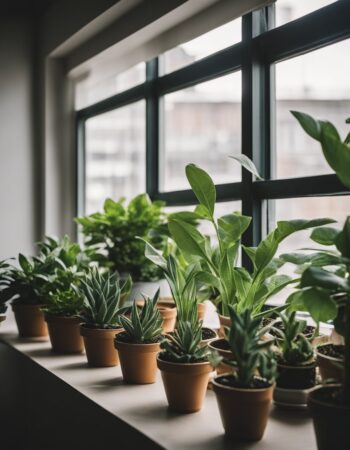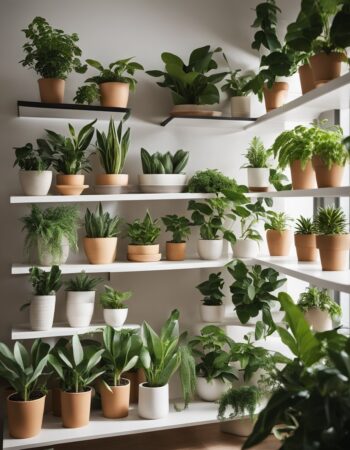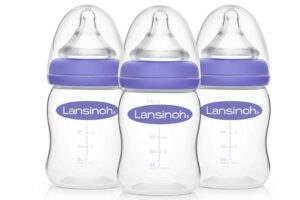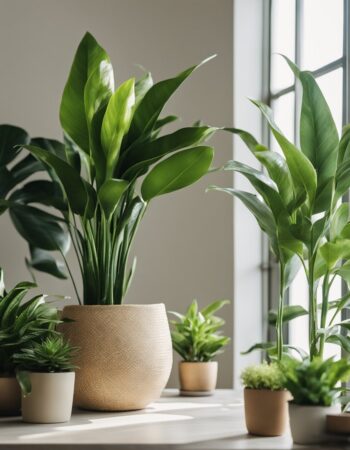Indoor plants are a great way to add some greenery and life to your home or office space. However, not everyone has the time or energy to devote to high-maintenance plants that require constant attention. That’s where low-maintenance indoor plants come in. These plants are perfect for beginners or those who don’t have a lot of experience with houseplants.
In this article, we will be discussing the top 10 low-maintenance indoor plants that are perfect for anyone looking to add some greenery to their space without the hassle of constant care. Whether you’re a seasoned plant parent or just starting out, these plants are sure to thrive with minimal effort on your part. So, without further ado, let’s dive into the world of low-maintenance indoor plants and discover which ones are right for you.
Understanding Indoor Plants
Indoor plants are a great way to add some greenery and life to your home or office. They are not only aesthetically pleasing but also provide numerous benefits such as cleaning the air, reducing stress, and improving overall well-being.
Houseplants come in various shapes, sizes, and colors, making them suitable for any indoor environment. Some popular low-maintenance houseplants include snake plants, pothos, ZZ plants, and spider plants.
When choosing indoor plants, it’s important to consider the environment they will be living in. Factors such as lighting, temperature, and humidity can have a significant impact on their growth and health.
Low-maintenance houseplants are ideal for indoor environments as they require minimal care and attention. They are perfect for those who are new to plant care or have a busy lifestyle.
Indoor plants can be grown in pots or hanging baskets, and they can be placed on windowsills, desks, or shelves. They can also be used to create a focal point in a room or to add some greenery to a dull corner.
Overall, indoor plants are a great way to enhance the aesthetic appeal of any indoor environment while providing numerous health benefits. With a little care and attention, they can thrive and add life to any space.
Top 10 Low-Maintenance Indoor Plants

Indoor plants have become increasingly popular in recent years due to their ability to purify the air, reduce stress, and improve overall well-being. However, not everyone has the time or expertise to care for high-maintenance plants. That’s where low-maintenance indoor plants come in.
Here are the top 10 low-maintenance indoor plants that are easy to care for and perfect for those who want to add some greenery to their home without the hassle:
Snake Plant
Also known as Sansevieria, the snake plant is native to Asia and is one of the easiest plants to care for. It can survive in low light and doesn’t require frequent watering. In fact, it’s best to let the soil dry out completely before watering again. The snake plant is also known for its air-purifying properties, making it a great addition to any home.
Pothos
Pothos, also known as devil’s ivy, golden pothos, or marble queen pothos, is a popular low-maintenance plant that is perfect for beginners. It can grow in a variety of lighting conditions and doesn’t require frequent watering. Pothos is also known for its ability to purify the air, making it a great addition to any home.
ZZ Plant
The ZZ plant, also known as Zamioculcas zamiifolia, is a low-maintenance plant that can survive in low light and doesn’t require frequent watering. It’s also known for its air-purifying properties, making it a great addition to any home.
Jade Plant
The jade plant is a succulent that is native to South Africa and is known for its low-maintenance care. It can survive in low light and doesn’t require frequent watering. In fact, it’s best to let the soil dry out completely before watering again. The jade plant is also known for its ability to bring good luck and prosperity, making it a popular choice for many homes.
Philodendron
Philodendron is a popular low-maintenance plant that comes in a variety of species, including the Philodendron Brasil. It can grow in a variety of lighting conditions and doesn’t require frequent watering. Philodendron is also known for its ability to purify the air, making it a great addition to any home.
Dracaena
The dracaena, also known as the dragon tree, is a low-maintenance plant that can survive in low light and doesn’t require frequent watering. In fact, it’s best to let the soil dry out completely before watering again. The dracaena is also known for its air-purifying properties, making it a great addition to any home.
Spider Plant
The spider plant, also known as Chlorophytum comosum, is a popular low-maintenance plant that is perfect for beginners. It can grow in a variety of lighting conditions and doesn’t require frequent watering. The spider plant is also known for its ability to purify the air, making it a great addition to any home.
Rubber Plant
The rubber plant, also known as the rubber tree, is a low-maintenance plant that can survive in low light and doesn’t require frequent watering. The rubber plant is also known for its air-purifying properties, making it a great addition to any home.
Money Plant
The money plant, also known as the Chinese money plant or money tree, is a low-maintenance plant that can survive in low light and doesn’t require frequent watering. It’s also known for its ability to bring good luck and prosperity, making it a popular choice for many homes.
Aloe Vera
Aloe vera is a popular succulent that is known for its low-maintenance care. It can survive in low light and doesn’t require frequent watering. Aloe vera is also known for its ability to soothe skin irritations, making it a great addition to any home.
In conclusion, these top 10 low-maintenance indoor plants are perfect for those who want to add some greenery to their home without the hassle. They are easy to care for and have a variety of benefits, including air purification and bringing good luck and prosperity.
Plant Care Tips

When it comes to low-maintenance indoor plants, it’s important to understand their basic care requirements. Here are some tips to help you keep your plants healthy and thriving:
Light Requirements
Different plants have different light requirements. Some prefer low light, while others need bright, indirect light. It’s important to research the specific needs of each plant before placing them in your home. Some common light requirements include:
- Low light: Plants that can thrive in low light include snake plants, ZZ plants, and pothos.
- Bright indirect light: Plants that need bright, indirect light include peace lilies, spider plants, and philodendrons.
- Indirect sunlight: Plants that need indirect sunlight include rubber plants, fiddle leaf figs, and bird of paradise.
- Fluorescent light: Plants that can thrive under fluorescent light include spider plants, pothos, and snake plants.
- Filtered light: Plants that need filtered light include ferns, calatheas, and dracaenas.
Watering Needs
Overwatering is a common issue that can lead to root rot and other problems. It’s important to understand the watering needs of each plant and to avoid overwatering. Some common watering needs include:
- Moderate watering: Plants that need moderate watering include snake plants, ZZ plants, and spider plants.
- Low watering: Plants that can thrive with infrequent watering include succulents and cacti.
- Humidity: Some plants, such as ferns and calatheas, require higher humidity levels. You can increase humidity by misting your plants or placing a humidifier nearby.
Temperature and Humidity
Temperature and humidity can also affect the health of your indoor plants. Some plants prefer warmer temperatures, while others prefer cooler temperatures. Some common temperature and humidity needs include:
- Humid rooms: Plants that thrive in humid rooms include ferns, calatheas, and orchids.
- Cooler temperatures: Plants that prefer cooler temperatures include snake plants, ZZ plants, and peace lilies.
- Warmer temperatures: Plants that prefer warmer temperatures include tropical plants like bird of paradise and fiddle leaf figs.
Soil and Repotting
Well-draining soil is important for most indoor plants. It’s also important to repot your plants when they become root-bound. Some common soil and repotting needs include:
- Well-draining soil: Most indoor plants require well-draining soil to prevent root rot.
- Repotting: You should repot your plants when they become root-bound, which means their roots have outgrown their current container.
Pruning and Maintenance
Pruning and maintenance can help keep your plants healthy and looking their best. Some common pruning and maintenance needs include:
- Pruning: You should prune your plants to remove dead or damaged leaves and to promote new growth.
- Maintenance: Regular maintenance, such as wiping down leaves and checking for pests, can help keep your plants healthy.
Common Issues and Solutions
Even with proper care, indoor plants can still experience issues. Some common issues and solutions include:
- Root rot: Overwatering can lead to root rot. To prevent this, make sure your plants are in well-draining soil and avoid overwatering.
- Yellow leaves: Yellow leaves can be a sign of overwatering, underwatering, or other issues. Check the soil moisture and adjust your watering schedule as needed.
- Pests: Common pests include spider mites, mealybugs, and scale insects. You can use natural or chemical treatments to get rid of pests.
By following these plant care tips, you can help your indoor plants thrive with minimal effort.
Benefits of Indoor Plants
Indoor plants are not just a beautiful addition to any space, they also have several benefits. Here are a few reasons why you should consider adding indoor plants to your home or office:
-
De-stress: Studies have shown that indoor plants can help reduce stress levels and improve overall well-being. The sight and smell of plants can have a calming effect on the mind and body, making them a great addition to any space where people need to relax and unwind.
-
Improve air quality: Indoor plants can help purify the air by removing toxins and pollutants, such as formaldehyde and benzene. This makes them a great choice for office spaces or any other indoor environment where air quality may be a concern.
-
Increase productivity: Research has shown that indoor plants can help improve concentration and productivity. Having plants in the office can help employees feel more energized and focused, which can lead to better performance and higher job satisfaction.
-
Indoor tree: Indoor trees can serve as a focal point in any room and add a touch of nature to your space. They can also help improve air quality and provide a natural sound barrier, making them a great choice for busy or noisy environments.
Overall, indoor plants are a low-maintenance and cost-effective way to improve the look and feel of any indoor space. Whether you’re looking to de-stress, improve air quality, or increase productivity, there’s a plant out there that can meet your needs.
Conclusion
In conclusion, there are many low-maintenance indoor plants that are perfect for those who are busy or new to being a plant parent. These plants require little attention and care, making them easy-care options for anyone looking to add some greenery to their home or office.
Some of the top low-maintenance indoor plants include the snake plant, ZZ plant, pothos, and spider plant. These plants can thrive in a variety of lighting conditions and do not require frequent watering or fertilizing.
When selecting a low-maintenance indoor plant, it is important to consider the lighting and humidity levels in your space. Some plants, such as the peace lily and Chinese evergreen, prefer low light and high humidity, while others, such as the succulent and cactus, prefer bright, direct sunlight and dry conditions.
Overall, with the right plant selection and a little bit of care, anyone can become a successful plant parent. Low-maintenance indoor plants are a great way to add some greenery to your space without the time and effort required by high-maintenance plants.
Frequently Asked Questions
What are some low-maintenance indoor plants that are safe for cats?
Some low-maintenance indoor plants that are safe for cats include spider plants, Boston ferns, and African violets. These plants are non-toxic and can be a great addition to any cat-friendly home.
What are the top 10 low-maintenance indoor plants for a living room?
The top 10 low-maintenance indoor plants for a living room include snake plants, peace lilies, ZZ plants, and pothos. These plants require minimal care and can add a touch of greenery to any living room.
What are some low-maintenance indoor trees that can thrive in low light?
Some low-maintenance indoor trees that can thrive in low light include the Chinese evergreen, the rubber plant, and the dragon tree. These trees can add a touch of nature to any indoor space without requiring much sunlight.
What are some of the health benefits of having indoor plants?
Indoor plants can provide a variety of health benefits, including improving air quality, reducing stress levels, and boosting productivity. Plants can also help to create a more relaxing and inviting atmosphere in any indoor space.
What is the easiest indoor plant to take care of?
The easiest indoor plant to take care of is the snake plant. This plant can thrive in a variety of lighting conditions and only needs to be watered occasionally. It is also a great air purifier, making it a popular choice for many indoor spaces.
What are some low-maintenance outdoor plants that can also be grown indoors?
Some low-maintenance outdoor plants that can also be grown indoors include succulents, cacti, and herbs like basil and mint. These plants require minimal care and can thrive in a variety of indoor environments.




